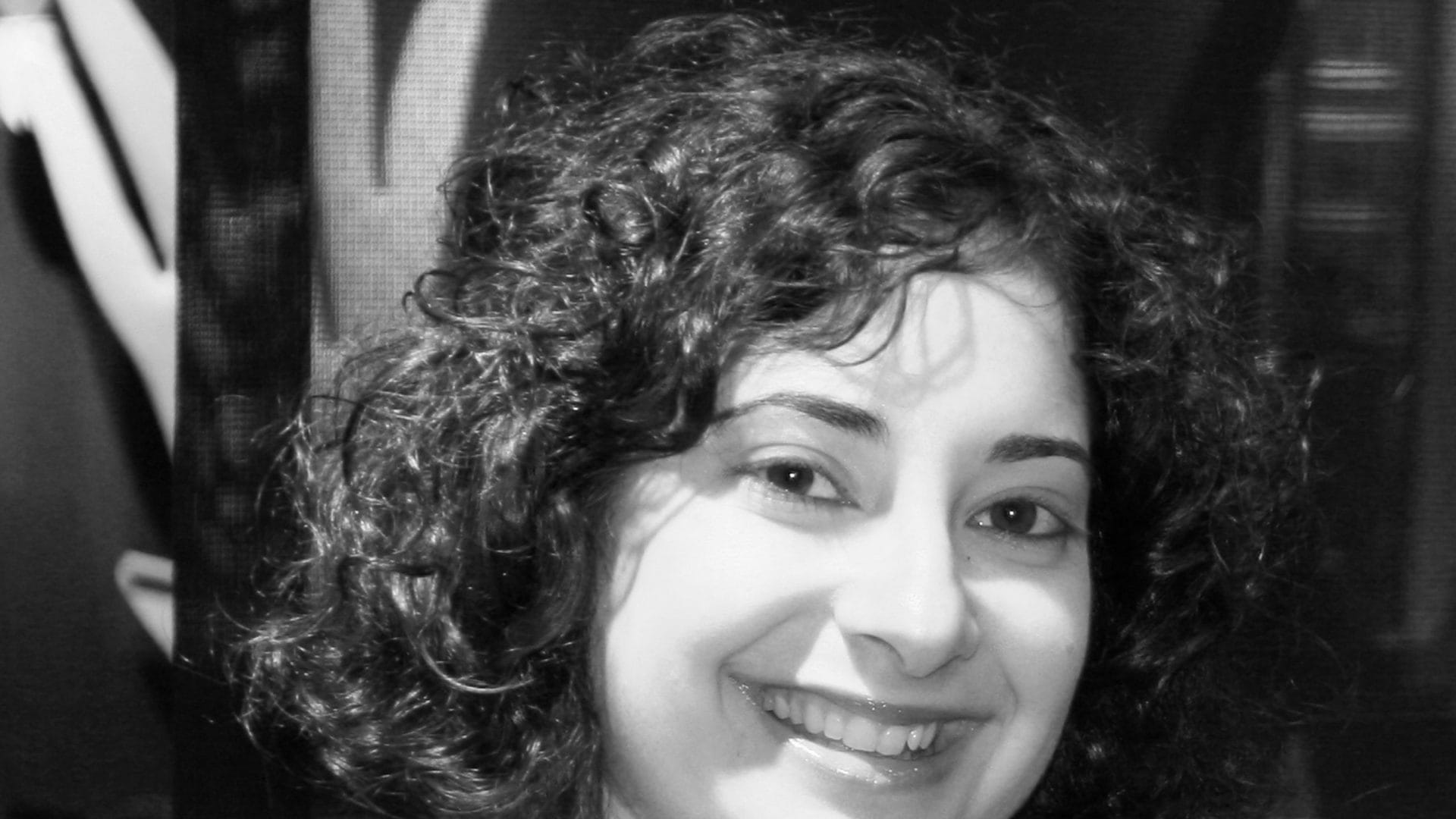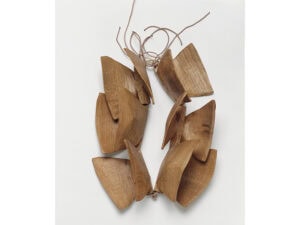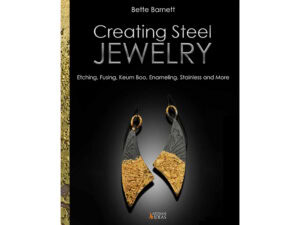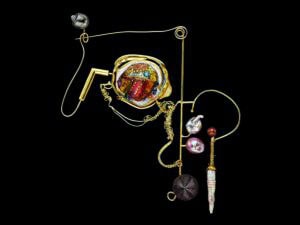
Great jewelry like great art needs to make a statement. The decorative arts have been considered a lesser art for centuries but they are finally recognized to be on par with the fine arts. Well, jewelry is not a lesser art, either. It should be about new ideas, new materials, new techniques. Artist-designed jewelry is its own field. As Kelly H. L’Ecuyer, curator at the Museum of Fine Arts in Boston and jewelry specialist, writes in Jewelry by Artists: In the Studio, 1940-2000, by definition ‘artist jewelry is designed by an artist with drawings or models but is fabricated by skilled artisans in a workshop. Usually it is the sculptor of painter who designed the work that is credited with authorship.’ In this sense artist-designed jewelry stands apart from studio jewelry, where the artist generally designs and makes the piece.
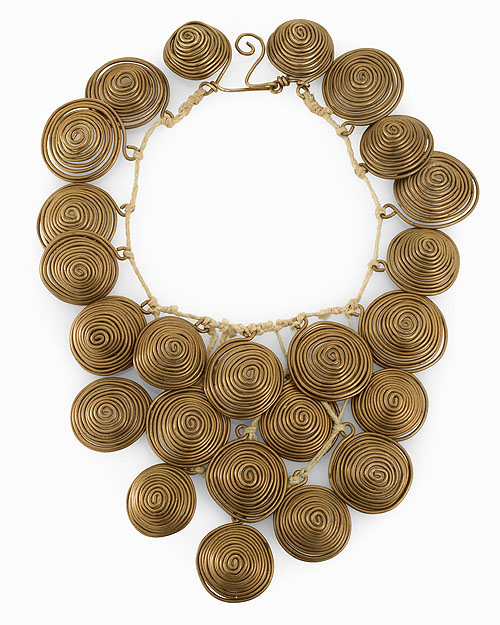
It should be stated from the beginning that one is not judging Venet’s taste in the same way that one does not go to a great museum and proclaim that the art on view is awful. We may not like everything that we see but it is nonetheless, an important assembly of jewelry. Venet sees herself as a champion for artist jewelry, proudly displaying her collection on her wrists and neck. She goes beyond being just a collector by also commissioning the jewelry. Venet is an instigator, challenging artists to step out of their comfort zone and work in a medium that is new to them. As L’Ecuyer writes in Jewelry by Artists, ‘the cachet of well-known artists has also lent credibility to the idea of jewelry as an art form and helped broaden awareness of art jewelry.’ Although this exhibition proves that a ‘big name’ does not always mean that a piece of jewelry will be successful, it does do a lot to raise the value of a piece. One should use Picasso to Koons: The Artist as Jeweler as an opportunity to familiarize oneself with this field populated by great talent.
Let us touch on aesthetics first. As gallery owner and jewelry connoisseur Audrey Friedman suggested in a lecture she gave about artist jewelry, ‘jewelry must combine the sculptural with the exquisite in just the right proportions in order to be successful.’ This is not an easy task even for the most brilliant of artists. Most will agree that Pablo Picasso was a genius. He constantly reinvented himself and redefined painting and sculpture. However, are Picasso’s jewelry designs as remarkable? The show features six brooches, designed by Picasso and made by François Hugo in the early 1970s. The brooches were inspired by themes that are often seen in Picasso’s work, bulls and mythological figures, but they are flat and lack that originality that one associates with Picasso’s work. They are like trinkets from a museum gift shop, where one expects to find an artist’s most popular images copied onto everything from scarves to magnets. Although not unique, these are not cheap souvenirs either. Picasso’s jewelry was executed in 23-karat gold and most were produced in editions of 20. Like anything associated with Picasso’s name, the jewelry is held in high regard by collectors and valuable because of the association.

For Braque, jewelry was an important part of his late work. The artist’s decision to make jewelry was the result of his fears that few three-dimensional examples of his work existed. The artist completed 110 gouaches, which he gave to Baron Heger de Löwenfeld, a respected jeweler, to fabricate. The collection, appropriately titled Metamorphosis, was inspired by Greek mythology (the pieces are named after Greek heroes) and the metaphysical theme of flight. The brooch Hero (1962), of a fish with a human face, defines metamorphosis. The bird in flight, as seen in several of the brooches on view, is another recurring theme in his work. The pieces are full of life and movement and the workmanship is also very good. The gold is beautifully textured and, unlike the jewelry of Picasso and Ernst, they are not just made of precious metals but also incorporate precious stones, like sapphires and rubies, into the design. According to the catalog, the artist was so pleased with the results that he referred to Baron Heger de Löwenfeld as the ‘continuation of my hand’ and the two worked very closely on the execution of each piece. Braque’s jewelry garnered much attention during his lifetime. In 1963, the year the artist died, André Malraux organized an exhibition, Jewelry by Braque, at the Louvre.
The biggest problem that most contemporary jewelry aficionados have with artist-designed jewelry, including this reviewer, is that most of these were produced in multiples. This means that not only is the maker’s hand missing but also, unlike a great work of art, it loses the prestige of being one of its kind. With 124 artists featured in the exhibition it is not surprising to see the ‘usual suspects’ like Gio and Arnaldo Pomodoro, Claude Lalanne, Lucio Fontana and Pol Bury, but Picasso to Koons provides us with the opportunity to see the stellar and unique works of the Italian Futurist artist Gino Severini, the Greek sculptor Costa Coulentianos, or the Chilean painter Roberto Matta, among others. Severini’s silver and gold bangle (c.1940’s) resembles a shackle with uneven metallic plates bolted together. Coulentianos’s Untitled necklace (c.1990) of interlocking, gilded bronze, ribbon-like forms was inspired by the women in his life and influenced by the work of Alexander Calder. Matta’s Untitled necklace (c.1990s) is a delicate mix of gold and pearls. The elongated baroque pearls are tied together with thin, gold wire, resembling amulets.
One comes to realize halfway through the exhibition that the sculptor is a better jewelry designer than a painter. This is not unexpected, as sculptors understand three-dimensionality better. They are simply making another sculpture but on a smaller scale. Pablo Gargallo’s Pequeña Star (1990) is adapted from the artist’s original sculpture. In 1925, Gargallo created a series of brooches based on three-dimensional heads that he used as studies for large-format sculptures. The brooch is wonderfully detailed, with slightly skewed lips and beady eyes hidden under a helmet. Alexander Calder’s jewelry has been widely exhibited over the last number of years, nonetheless the Untitled necklace (1935) of three-dimensional, coiled brass wire on a simple cord is sensational, as is the bracelet (1935) that completes the suite. Calder’s mobiles served as an inspiration, as did his wife, Luisa, and the friends who received his jewelry as gifts. In this particular necklace the brass coils are so closely fitted together that the center pieces appear stacked. What makes Calder’s jewelry so great is that by utilizing a material such as brass wire (or silver and steel) with which he was very familiar because he also used it to create mobiles, he seamlessly transitioned from sculpture to jewelry. Most importantly, his jewelry designs are original while still distinctly his.
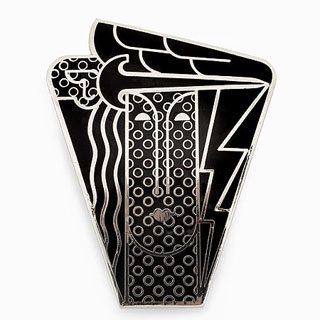
It cannot be overemphasized that the jewelry maker is as important as the designer. Picasso and Ernst both had their jewelry made by François Hugo, who was the great-grandson of Victor Hugo, the writer, and son of Jean Hugo, who designed theater sets. Creativity flowed through his veins and from a young age he was interested in jewelry making. A goldsmith by training he specialized in religious jewelry. Once he became known in the surrealist circles, Dorothea Tanning (who was married to Ernst) Jean Arp and Jean Cocteau also asked him (and his son, Pierre) to produce their jewelry. In 1967, the Italian jewelry designer GianCarlo Montebello and his wife, Teresa Pomodoro (sister of Gio and Arnaldo) founded GEM Montebello and made it their mission to fabricate artist jewelry. The worked closely with Niki de Saint-Phalle, Man Ray and Lowell Nesbitt. Examples of these collaborations are also part of the exhibition.
Functionality in jewelry should be expected. However, one may be surprised to learn that the question of functionality in artist-designed jewelry (as well as contemporary studio jewelry) is unresolved. One would think that jewelry designers would be mindful of how a piece should be worn. After all, while jewelry is decorative it still has a function to serve. However, not all jewelry designers are mindful of their pieces translating well into jewelry. While Venet states in the exhibition text that all of the jewelry was made to be worn, some of the pieces are definitely more interesting as objects than as jewelry. Michael Craig-Martin’s Light Bulb necklace (2007) a yellow-and-white gold necklace in the shape of a light bulb displayed on a red pillow is a good example. It is hard to image what this piece would look like when worn. Presumably the shape is lost and only the socket is seen hanging down. Günther Uecker’s Untitled gold ring (2011) also raises some eyebrows. The German painter and sculptor nailed gold protrusions onto the base of the ring, which does not have a traditional shank but is worn in between the fingers. Belgian designer and sculptor’s Arne Quinze’s My Safe View headpiece (2010) is made of painted wood and electric wire. It is unclear how one is supposed to wear it or if it will hurt. Kader Attia’s Menottes (Handcuffs) ring (2007) is supposed to join two fingers together. The handcuffs are something that the French artist Attia has already toyed with in his large-scale work. It is unclear how the Untitled eight rings and chain (2011) designed by the Belgian neo-conceptual artist Wim Delvoy are meant to be worn as they are supposed to be inseparable from the black leather box that they come in. British artist Sam Taylor-Wood designed a ring in white gold with diamonds called The Tear Catcher (2003) which ‘extracts feelings, happy or sad’ that are then placed into one of five vials, with cork stoppers, in a custom-made, leather casket.
One of the most unexpected facets of this exhibition is how romantic it is and how this is as much of an exhibition about muses that inspire artists as it is about artist jewelry. In the exhibition’s catalog, Barbara Rose writes that ‘Today, painters and sculptors make jewelry as tokens of affection for loved ones to be worn as the medieval knight carried a token of his lady love.’ Picasso made necklaces for Dora Maar during the 1930s and 1940s, Dorothea Tanning presented her friends with jewelry and Harry Bertoia began to design jewelry for family and friends, first beginning with wedding bands. Calder, too, made a wedding band for his wife, as did Diane Venet’s husband, the sculptor Bernar Venet. She reveals in the exhibition catalog that, ‘My passion for artists’ jewelry was born on the day Bernar amused himself by rolling a thin stick of silver around my left ring finger to make me a wedding ring . . .’
The catalog for Picasso to Koons: The Artist as Jeweler is a wonderful chronicle of Venet’s collection. It provides a beautiful photographic account of the pieces featured and includes concise artist biographies. While this is certainly not the definitive publication on artist-designed jewelry, its value lies in documenting the contemporary pieces, as Venet’s collection is very strong in this area.
As any woman can attest, there is a special relationship between the giver and the receiver of a jewel, but that is especially true when the giver is also a world-renowned artist. Venet shares with us that, ‘Frank Stella, after numerous refusals, arrived one day with a package under his arm containing a necklace, a design made of titanium, crudely painted gold.’ While it is unlikely that Stella will ever come to any of our doors bearing gifts, Venet’s challenge to contemporary artists to design jewelry has resulted in a mini-museum for herself and an interesting lesson for us.

